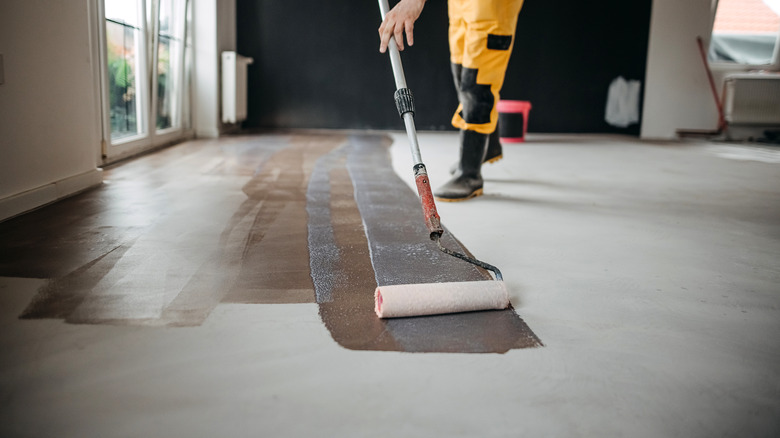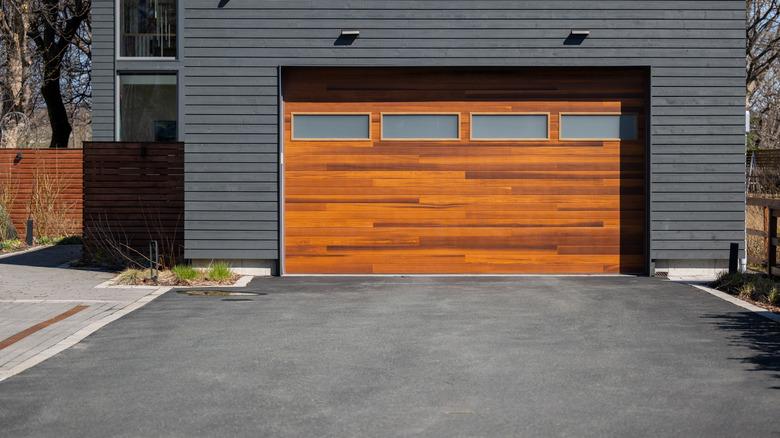Is Staining Concrete A Good Idea Or Big Mistake?
Once you DIY the heck out of your home, you'll likely start eyeballing other ways to make your space even more reflective of your family's personality. One of the most popular is to add color to your concrete. Throwing a stain over dullish grey concrete, whether a driveway, garage, front porch, or patio, is a cost-effective way of changing the look of an otherwise ordinary slab. Sure, it might boost curb appeal, but is it worth the trouble or a big mistake? The short answer is a resounding — yes, and it really isn't that much work.
Stained concrete has a durable finish, making it more resistant to stains, and requires little to no maintenance. There are techniques you can learn to elevate your concrete floor with cool marbling, swirls, waves, or stenciled designs. Before cementing your decision one way or the other, there are some things to keep in mind, like the size of the area and the overall look you want. These answers will determine which type of stain — acid or water-based — is the best option for your space. While it contains more chemicals than water-based, acid stains are more durable, easier to work with, and cheaper, but this type of concrete stain isn't without its limitations. Deciding whether concrete flooring is right for your space is a balancing act between the pros and cons before jumping in with both feet.
To stain or not to stain your concrete
If you're seriously considering staining your concrete, you may think the benefits far outweigh the disadvantages, but these are some things to keep in mind. Besides the polished look it brings, stained concrete is a great way to somewhat camouflage potential future stains, like oil, rust, or grease, to name a few. However, adding a stain will draw attention to imperfections, which means cracks in the concrete will remain cracks after it's stained — just in a different color.
When it comes to picking a stain color, the cup runs over. Acid stains include light earthy color options, like tans, browns, terra cottas, and soft-blue greens. In contrast, water-based stains have a wider selection that ranges from translucent to opaque pigments, giving you tons of versatility. Between the two types, acid stains tends to last longer. With that said, once you've stained your concrete, it becomes more difficult to change it no matter which one you pick. If you plan to do the job yourself, there's a risk the stain will turn out blotchy and streaky. That's why it's important to prep the concrete first by buffing out imperfections and cleaning the whole surface. Although there's a bit more work initially, once it's done you can sit back and enjoy the fruits of your labor. Then again, there's always the option to skip the stain and DIY your garage floor with epoxy instead.

